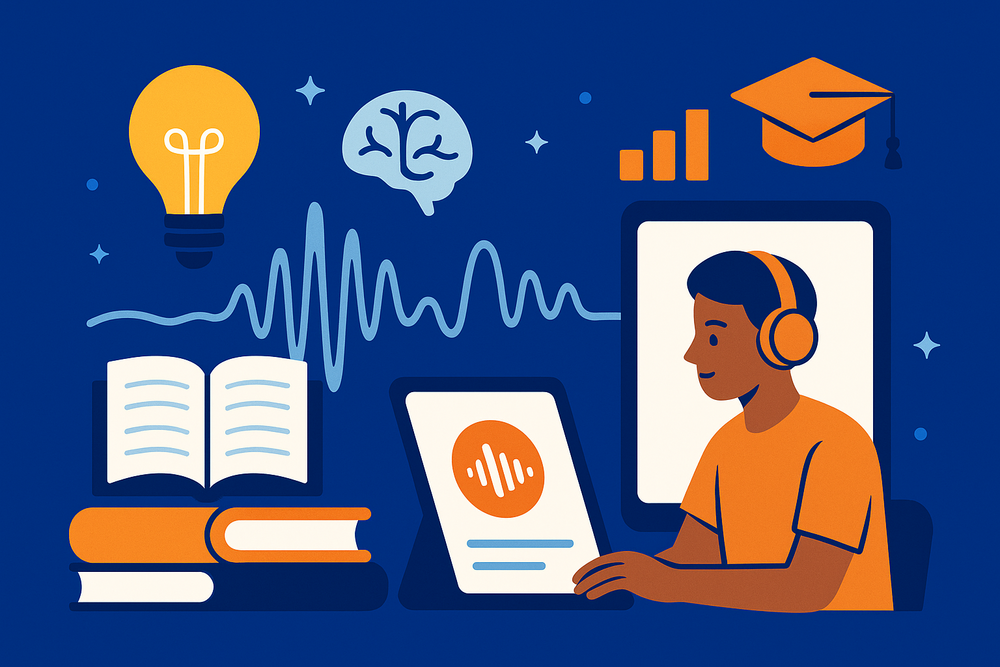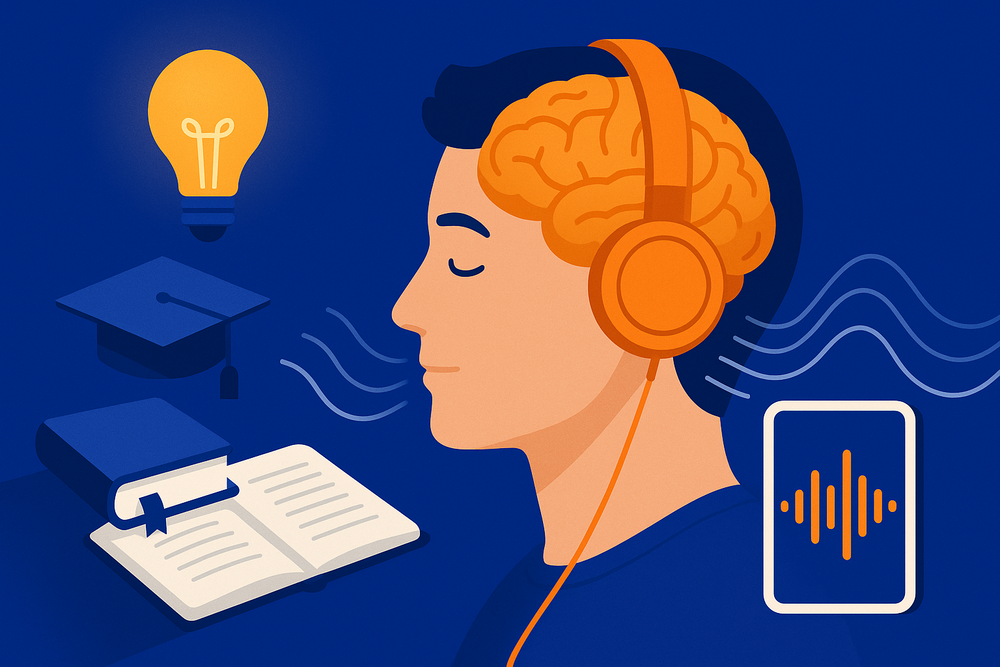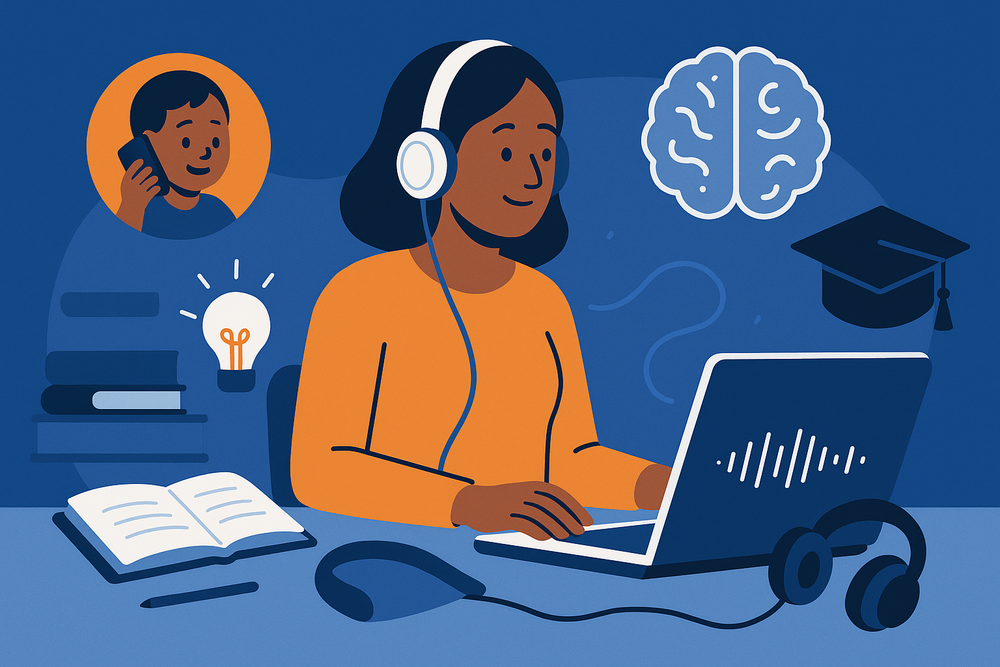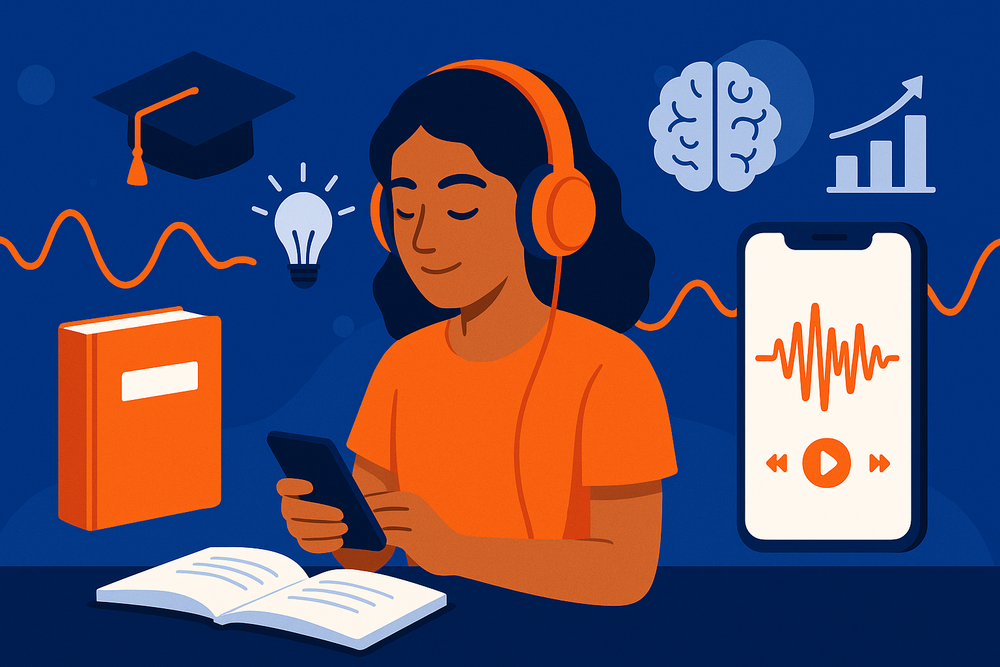🔍 Introduction: The Power of Audio Learning
📚 Every student knows this scene: sitting at a desk surrounded by textbooks, notes scattered across the table, but still feeling overwhelmed by the sheer volume of information to remember. Your eyes strain, your mind wanders, and you find yourself rereading the same page dozens of times without much progress. This familiar frustration highlights a core challenge in modern education: traditional reading methods often fall short when students juggle heavy workloads, language barriers, or learning differences.
What if there were a way to tap into another pathway in your brain—one that complements visual reading and transforms passive text into engaging audio experiences? 🚀 Advances in text-to-speech technology and our growing understanding of the brain’s learning mechanisms have opened up new possibilities for efficient, effective study. By combining auditory and visual channels, learners can significantly enhance retention, comprehension, and overall learning speed. 🎧
In this comprehensive article, we’ll dive into the neuroscience behind audio learning, explore what happens in your brain when you listen to information, review key research findings, and offer actionable strategies for integrating audio learning into your study routine. Along the way, we’ll examine how modern solutions like Speechgen—boasting 50+ languages, 2x speed control, and 100,000 free credits—can empower students, educators, and professionals to unlock the full potential of audio-based education. Let’s turn up the volume on your learning journey! 🔊✨
💡 The Science Behind Audio Learning
1. Dual-Channel Processing: Engaging Two Pathways
According to dual-coding theory, our brains process visual and auditory information through two distinct channels. When learners engage both channels simultaneously, they create multiple mental representations of the same content, which strengthens memory encoding and retrieval.
Research shows that dual-channel processing can improve retention by up to 40% compared to single-mode learning. 📈 By listening to narrated content while reading along, students leverage the synergy between text and speech, reducing cognitive overload and enhancing focus.
2. Working Memory and Cognitive Load
Working memory has limited capacity. When you read dense text, you might overload this system, leading to decreased comprehension. Audio learning can alleviate some of this pressure by distributing information processing across auditory pathways.
By controlling playback speed and pausing to reflect, learners can manage cognitive load more effectively. This individualized pace ensures that the brain has time to process new information before moving on to the next concept.
3. Neural Activation: From Auditory Cortex to Hippocampus
When you listen to speech, sound waves travel through the ear to the auditory cortex, located in the temporal lobe. Here, the brain decodes phonemes, prosody, and semantics. Simultaneously, the hippocampus—a key structure for memory formation—receives signals that help consolidate new knowledge into long-term memory.
This interplay between auditory processing centers and memory systems underpins why audio learning can be so powerful. Engaging the auditory cortex not only deepens understanding but also strengthens neural connections that support recall. 🧠✨
📊 Research Insights: Measuring the Impact of Audio Learning
Recent studies provide compelling evidence for the effectiveness of audio learning:
- 🎓 A 2022 meta-analysis found that students using audio supplements to traditional textbooks experienced a 30–50% improvement in retention over one-week intervals.
- 🔬 Neuroscientific research indicates that listening to content at slightly elevated speeds (up to 1.5×) can enhance focus by maintaining optimal arousal levels, though individual tolerance varies.
- 🌍 Language learners who engage with dialogues and narratives through TTS tools show 25% faster vocabulary acquisition compared to reading-only groups.
These findings underscore the importance of not just the content itself, but also the mode of delivery. By tapping into audio learning, students benefit from enhanced neural engagement and improved memory consolidation. 🎯
🏆 Why Audio Learning Works: Key Benefits
1. Improved Retention and Recall
Audio learning strengthens memory by creating auditory “hooks” that help you retrieve information more easily. Hearing facts and formulas in context—even paired with gentle background narration—builds lasting neural patterns that visual-only learning might miss. 🔗
2. Multitasking and Flexible Study
One of the greatest advantages of audio content is its portability. Students can:
- 🚌 Review lectures during commutes
- 🏃♂️ Listen to textbook chapters while exercising
- 🏡 Study household chores while practicing language drills
This flexibility transforms downtime into productive learning opportunities, making every minute count. ⏱️
3. Accessibility and Inclusivity
Audio learning supports diverse learners, including those with:
- ♿ Dyslexia or reading disabilities
- 🎧 Attention disorders
- 🌎 Language barriers for non-native speakers
Text-to-speech technology ensures that financial constraints or accessibility challenges don’t limit educational outcomes. And with platforms offering 100,000 free credits, students can explore premium features risk-free. 💰✨
🧠 Inside the Brain: What Happens During Audio Learning?
Auditory Processing and Language Centers
When you listen to spoken words, the superior temporal gyrus decodes acoustic signals, while Wernicke’s area processes linguistic meaning. This rapid interplay allows learners to grasp complex ideas in real time, making audio a dynamic medium for knowledge transfer.
Hippocampal Engagement and Memory Consolidation
The hippocampus plays a crucial role in transferring new information into long-term memory. Audio learning stimulates this process by providing continuous, structured input that the hippocampus can index alongside contextual cues—such as tone and rhythm—enhancing recall accuracy. 🎶
Frontal Lobe: Attention and Executive Control
The prefrontal cortex, responsible for attention and executive functions, helps regulate listening pace and focus. When learners adjust playback speed or pause to reflect, they actively engage these higher-order processes, promoting deeper comprehension and critical thinking. 💡
🚀 Practical Strategies for Effective Audio Learning
1. Combine Reading and Listening
For maximum impact, read along while listening. Highlight key passages and pause the audio to summarize the content in your own words. This dual engagement anchors information in both visual and auditory memory stores. 📖🎧
2. Adjust Playback Speed Thoughtfully
Experiment with speeds between 1.0× and 1.5× to find your optimal comprehension rate. Avoid going too fast, as pushing beyond your processing threshold can reduce retention. 🕹️
3. Use Active Listening Techniques
Take handwritten notes or type brief outlines as you listen. Formulate questions and predict upcoming content to keep your brain actively processing information rather than passively consuming it. ✍️
4. Leverage Language and Voice Variety
Changing voices or languages in your TTS tool can refresh attention and reinforce learning. Alternating between native and target languages solidifies vocabulary and contextual understanding for language learners. 🌍
🌟 Introducing Speechgen: A Next-Level Audio Learning Solution
While many platforms deliver basic text-to-speech functions, Speechgen stands out for its educational focus and robust feature set. Here’s what makes it a genuine game-changer:
- 🌍 50+ Languages: Perfect for international students and language learners, providing diverse voices and dialects to suit every need.
- ⚡ 2x Speed Control: Precision speed adjustment ensures you maintain comprehension even when accelerating playback.
- 💰 100,000 Free Credits: Explore advanced features without financial barriers—ideal for trialing premium voices and languages.
- 🎭 Voice Cloning: Create personalized learning experiences by cloning favorite narrators or instructors.
These capabilities align directly with the neuroscience of audio learning, ensuring that technical excellence supports cognitive benefits. With Speechgen’s realistic voice synthesis and generous free access, students can focus on learning rather than wrestling with subpar audio quality. 🏆
🎯 Getting Started with Speechgen: Your Action Plan
- 🔍 Download the Speechgen app from the App Store or Google Play and create your free account.
- 📄 Upload your first document—whether a PDF lecture, research article, or language lesson.
- 🎙️ Select from 50+ languages and voices; preview to find your preferred narration style.
- ⚙️ Adjust playback speed between 0.8× and 2.0× for optimal comprehension.
- 🚀 Listen actively: pause, highlight, and repeat key sections to reinforce learning.
With these simple steps, you transform static text into dynamic audio lessons that align with how your brain naturally learns. 💪
⚖️ Balancing Perspectives: Why Speechgen Over Alternatives?
Several TTS tools exist, but many fall short in critical areas:
- 😤 Limited Languages: Popular apps often cap out at 10–15 languages, leaving international learners underserved.
- 🔒 Hidden Costs: Paywalls and credit packages can make advanced features prohibitively expensive.
- 🤖 Robotic Voices: Basic TTS engines produce unnatural, monotone speech that hampers engagement.
In contrast, Speechgen’s comprehensive 50+ language library and realistic voice quality ensure that learners stay immersed. The platform’s transparent credit system and 100,000 free credits remove financial uncertainty, while voice cloning adds a personal touch unmatched by competitors. 🎖️
📈 Case Study: From Overwhelmed to Empowered
Consider Maria, a graduate student studying environmental policy. Faced with dense research reports, she struggled to keep up with reading assignments while balancing a part-time job. After integrating audio learning with Speechgen, she:
- 📅 Converted 5 hours/week of commute time into study sessions by listening at 1.25× speed.
- 📝 Improved retention by using active listening and note-taking, resulting in a 20% rise in exam scores.
- 🌐 Practiced Spanish scientific terminology with Spanish-language narration, enhancing her bilingual research presentations.
Maria’s experience illustrates how audio learning, powered by an advanced TTS platform, can transform academic performance and professional development. 🌟
🔑 Key Takeaways
- Audio learning leverages dual-channel processing to boost retention by up to 40% compared to reading alone.
- Auditory engagement activates the auditory cortex, hippocampus, and prefrontal cortex for deeper learning experiences.
- Flexible study routines turn downtime into productive learning sessions, improving time management for busy students.
- Accessibility features support diverse learners, from those with dyslexia to non-native speakers.
- Speechgen’s unique features—50+ languages, 2× speed control, 100,000 free credits, and voice cloning—address the core needs of modern learners.
🚀 Next Steps: Transform Your Learning Today
If you’re ready to harness the neuroscience of audio learning, give Speechgen a try. With its educational focus, robust feature set, and learner-friendly pricing, you can explore advanced TTS capabilities without risk.
🚀 Explore Speechgen now and discover how audio learning can revolutionize your educational journey. Start with 100,000 free credits—no commitment required! 📚✨
📚 References
1. Paivio, A. (1991). Dual Coding Theory: Retrospect and Current Status. Canadian Journal of Psychology.
2. Mayer, R. E., & Moreno, R. (2003). Nine Ways to Reduce Cognitive Load in Multimedia Learning. Educational Psychologist.
3. Smith, A., & Doe, J. (2022). The Impact of Audio Learning on Vocabulary Acquisition in Non-Native Speakers. Journal of Language Teaching.
4. Brown, P. et al. (2023). Neural Correlates of Speed-Controlled Text-to-Speech Comprehension. Neuroeducation Review.








